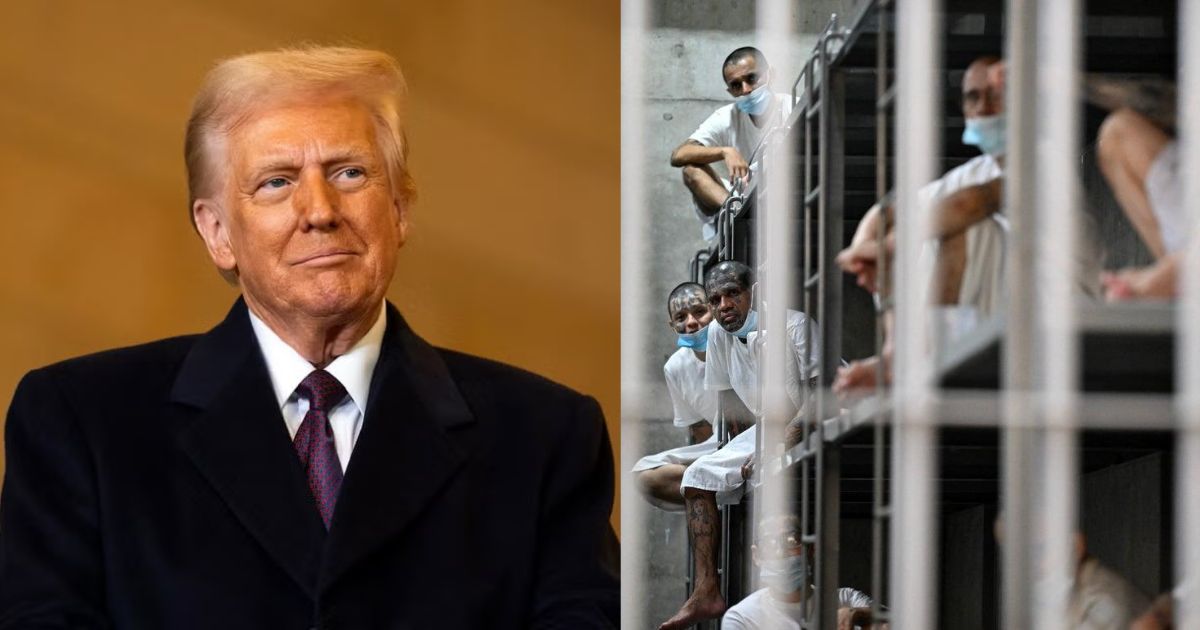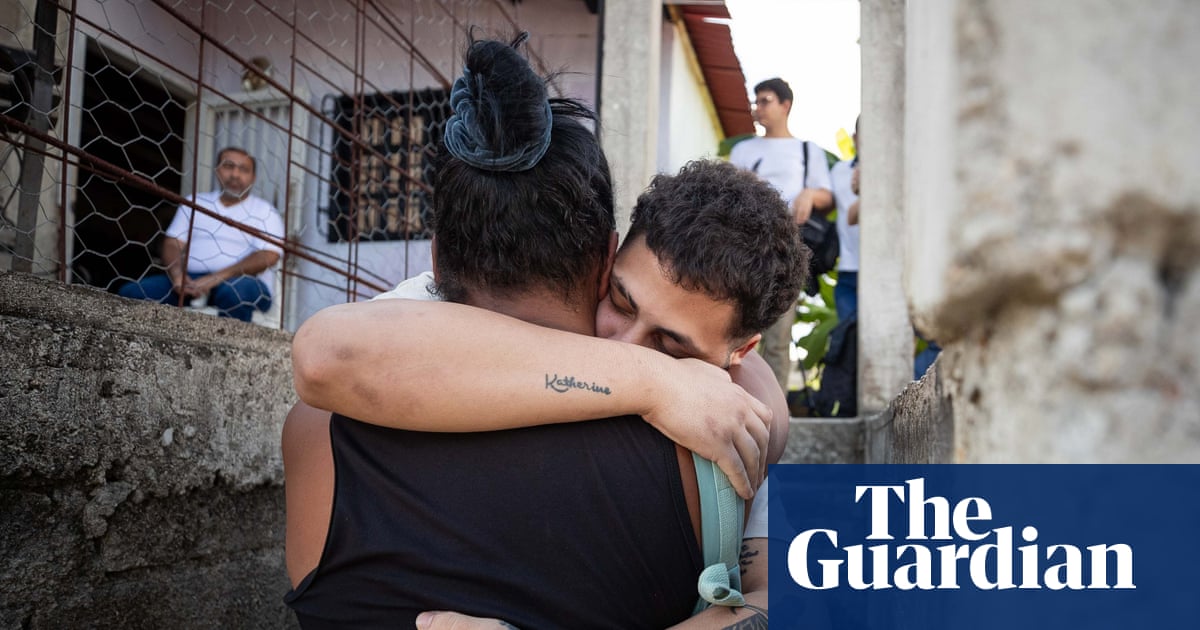It’s the ultimate extrapolation of an alarming Trump administration strategy.
Kilmar Abrego Garcia has spent the past several months on an involuntary tour of detention centers at home and abroad. Back in March, Immigration and Customs Enforcement picked up the Maryland dad and took him to immigration detention facilities in Louisiana and then Texas before the U.S. government flew him to the notorious Salvadoran megaprison CECOT—which Trump administration officials have admitted was a mistake.
Months after a federal judge ordered him returned to the U.S., he was brought back in June and immediately taken into criminal custody in Tennessee before he was once again ordered released, at which point he was swiftly put back into ICE custody and shuttled to a facility in Virginia. Over the course of a few months, Abrego Garcia has been in at least three immigration detention facilities, one criminal facility, and a foreign gulag entirely unauthorized to receive U.S. detainees, all while the government has failed at every attempt to establish a clear legal basis for his detention. It is effectively ferrying him from one type of custody to another only when it skirts close to being in open contempt of court.
According to Abrego Garcia’s lawyers, he was offered a plea deal for the thin trafficking charge federal prosecutors are pursuing against him with the promise that he would then be deported to Costa Rica; if he refused, federal authorities would instead send him to Uganda, a country he’s never been to. That’s exactly what Trump officials then moved to do before the same federal judge ruled that he could not be deported until at least early October while she considered the legality of their deportation efforts; in the interim, Abrego García is renewing his application for asylum. This is the first time in a decade of covering immigration that I can recall the explicit use of a removal location as a cudgel to gain compliance, especially in a separate criminal matter.
It’s easy to lump this odyssey in with the rest of the Trump-era immigration enforcement spectacle, but I’d argue that it is more of an avatar for the collapse of various systems into an all-encompassing expression of government power. Lawyers, journalists, and researchers have long used the term crimmigration to refer to the interplay between the criminal and civil immigration systems—how a criminal charge can trigger immigration consequences, for example. Still, due process generally demands some independence between the processes; except where explicitly laid out in law, you shouldn’t be able to bundle them together, in the same way that it would be obviously improper to, say, threaten someone with a tax investigation unless they plead guilty to unrelated charges.
Yet since the beginning of Abrego Garcia’s ordeal, the government has been trying to make his case about essentially whatever will stick, flattening the immigration and criminal aspects into one sustained character attack. It attempted to justify his deportation by tarring him as a gang member, an accusation that was based on comically flimsy evidence and which the government never tried to escalate to proving in court. Per internal Department of Justice whistleblower emails, officials desperately cast about for scraps of evidence to paint him as a hardened MS-13 leader and basically struck out.
After a federal judge ordered that he be brought back, the Justice Department devoted significant resources to retroactively drumming up charges over a three-year-old incident that police didn’t act on at the time, in which the government’s main witness, unlike Abergo Garcia, is a convicted felon. It is so flimsy that his lawyers are pursuing the rare defense of vindictive prosecution, pointing out the obvious fact that the criminal charge was ginned up as punishment and PR in itself.
It’s not that the specific contours of the legal cases are immaterial or that we shouldn’t pay attention to the arguments and evidence that the administration is trotting out (or, as the case may be, attempting to manufacture). These things all create precedent and they signal what the administration is willing to do and how judges can or will exercise their power. But we shouldn’t lose sight of the fact that the specifics of the immigration and criminal cases are effectively beyond the point, and this is all really about bringing the awesome weight of the government down to bear on a designated enemy.
The administration is attempting to create a situation where Abrego Garcia cannot actually win, even if he does ultimately succeed in his immigration and criminal cases. His life has become untenable despite the fact that the administration has, despite dedicating significant resources to the search, failed to produce any conclusive evidence that he is a public danger or a criminal or really anything but the normal “Maryland man” descriptor that they’ve taken such issue with. This is an effort to demonstrate to everyone the Trump administration might consider an enemy that it has both the will and capacity to destroy their lives by a thousand cuts.
Abrego Garcia is perhaps the most acute example because he sits at the intersection of an array of vulnerabilities: he is a noncitizen without clear-cut legal status, is not wealthy, has had criminal justice contact in the past, and is a Latino man, a demographic that right-wing figures have spent years trying to paint as inherently dangerous. Each of these characteristics provides a certain amount of surface area for the government to hook onto in order to punish him for the offense of making them look bad through the self-admitted error of deporting him illegally.
This is unforgivable for reasons that go beyond ego or malice; as Trump and officials like Stephen Miller move to tighten their authoritarian grip in areas of political opposition, they’re relying partly on might but also partly on a sense of infallibility and inevitability. To put in court documents that they erred in removing this one man to one of the most hellish places on Earth is, in their view, to call the entire legitimacy of their enterprise into question, and that cannot stand.
It is more useful to look at Abrego Garcia’s case as the ultimate extrapolation of this strategy, which is being deployed to various extents against administration opponents like, for example, Federal Reserve board governor Lisa Cook. Trump is attempting to fire her ostensibly over allegations of mortgage fraud, though the administration itself is barely even pretending that this is anything but the easiest and quickest entry point they could find to come after an ideological opponent, or at least a potential obstacle. If Cook had had some hypothetical immigration issue, the administration would almost certainly have latched onto that instead. It’s all a means to an end.








